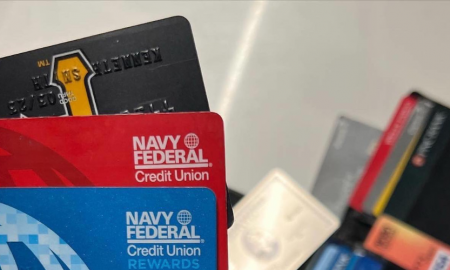
Is It Wise to Roll Your Student Loan as Part of Your Mortgage?

As the debt accumulation in America continues to rise, more people are looking for feasible ways to keep it under check. Everything from loan modifications to balance-transfer credit cards has become options that people are adopting. Another option that is steadily gaining popularity is the practice of rolling student loan debt so that it becomes your mortgage.
In fact, the two major debts that a large number of Americans face every day are student loans and mortgages. Indeed, the Federal Reserve has put the national student debt at a whopping $1 trillion, coming a distant second to mortgages which is at an astonishing $9 trillion!

Rolling student loans into the mortgage have become a payment option that students have considered
Rolling Your Student Loan
Moreover, Fannie Mae, a company that deals with the purchasing and packaging of U.S mortgages then sells them to interested parties, unveiled a new option for mortgage borrowers that possessed student loans. That is, borrowers could access a student loan cash-out refinance. That is, borrowers had the opportunity to pay their student loans by simply refinancing their mortgages.
Additionally, Fannie Mae has further stamped a waiver on loan-level price adjustment that would usually apply to such transactions.
Moreover, the cost of price adjustment will depend on risk factors that the borrower has, such as their debt-to-income ratio and their current credit score. Hence, some people could be lucky to just pay only 1 percent of their student loan just to get started with the arrangement!
Debt Reshuffling
The process of using one loan to pay off another is a practice that is slowly gaining traction Americans today. It is known as debt reshuffling.
That being said, debt reshuffling is not an easy task. One should keep in mind that they still owe the money that they just borrowed, despite using it to clear another loan.
Financial coach Chris Hogan comments on this setup, saying that most individuals normally feel like they are making progress. Here they are, taking proactive measures to get rid of their student loans.
The reality is totally different when looked at from a financial perspective. There you are, taking your student loan debt and transferring it to your home in return for attaining equity. It is certainly a massive financial risk, and one ought to carefully consider it.

The practice of debt reshuffling is steadily gaining popularity among Americans today
Using Your House as Collateral
Hogan continues on by saying that the goal of having a house is for it to be under your name. So when you go this route, what you are essentially doing is instantly making your home lose its equity to cover your student loan. It’s almost like your transferring your home into a piggy bank.
That being said, there is an advantage of paying off your student loan by refinancing your mortgage. In the process of doing so, you can greatly minimize the amount of interest that you need to pay off.
Hence, private student loan borrowers and PLUS loans tend to save more money than those that currently have subsidized federal student loans.
The executive director of National Consumers League, Sally Greenberg, comments on the situation. She says that incorporating student loans into your home is a tricky affair, considering the fact that student loans tend to have a higher interest as compared to mortgages. Hence, one has to be quite savvy while handling their finances.
Disadvantages of Rolling the Student Loan
That being said, rolling student loans and incorporating them into your mortgage has its disadvantage as well. For starters, you will be losing inherent benefits in the process.
If you happen to lose your job, you will need to apply to get a deferment on your student loans. That means that you will have to stop making payments, or the amount you are making towards your payments will have to be reduced.
Moreover, this will make you ineligible for any forgiveness program for your federal loans if you roll out your student loan as part of your mortgage.
Additionally, the likes of direct consolidation loans, FFEL, Federal Perkins loans, Federal Stafford loans, and direct subsidized loans do not require one to pay an interest during the process of loan deferment.
Hence, if you make the choice of rolling that student loan into your mortgage, you have to make your mortgage payments or else you could find your home being foreclosed.
Conclusively, there are essentially smarter ways in which you can reduce your student loan rate. One can begin by enrolling into student loan refinancing programs before attempting this route.
More in Loans & Mortgages
-
How Much Did John Krasinski Make from “The Office”? Revealing His Earnings
John Krasinski, the charming actor audiences know best as Jim Halpert from the beloved sitcom “The Office,” has amassed a significant...
May 27, 2024 -
How Mortgage Brokers Rip You Off and Ways to Prevent It
Buying a home is a thrilling yet undeniably complex journey. Amidst the excitement of house hunting and envisioning your future life...
May 23, 2024 -
Angelina Jolie’s Plastic Surgery – Debunking Myths and Realities
Angelina Jolie has captivated audiences for decades with her undeniable talent and mesmerizing beauty. Her sharp features and striking cheekbones have...
May 17, 2024 -
How Old Do You Have to Be to Buy a House? Exploring Legal Limits
Dreaming of that perfect place to call your own? A cozy haven bathed in afternoon sunlight, a backyard begging for barbecues...
May 11, 2024 -
How to Quit a Job Without Burning Bridges?
So, it’s time to say goodbye. Maybe you’ve landed your dream job, or perhaps you’re embarking on a new adventure. Whatever...
May 1, 2024 -
What Credit Bureau Does Navy Federal Use for Credit Card Approvals?
When it comes to choosing a credit card, understanding the behind-the-scenes processes can make a world of difference. So, you’re probably...
April 25, 2024 -
Has the FBI Arrested P Diddy? What You Need to Know About P Diddy Arrest
In recent developments that have captivated the public and media alike, the homes of Sean “Diddy” Combs, also known as Puff...
April 17, 2024 -
3 Easy Ways to Cash in Your Savings Bonds
Online With a TreasuryDirect Account In the age of digital banking and online investments, managing your savings bonds electronically is a...
April 11, 2024 -
How Employees Can Be Motivated By Their Own Work?
If there is one question every employee asks, it is: What makes a job fun and motivating? Well, this is not...
April 4, 2024














You must be logged in to post a comment Login